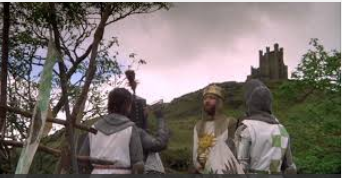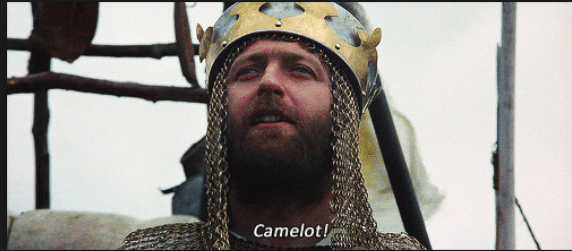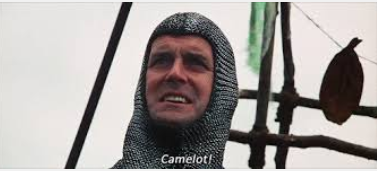Topic Modelling
Workshop on Building and Strengthening Digital Humanities through a Regional Network at San Diego State University, October 23-24, 2015
Scott Kleinman, California State University, Northridge / scott.kleinman@csun.edu
What is Topic Modelling?
- A form of unsupervised machine learning used to identify categories of meaning in collections of texts
- Developed for information search and retrieval
- Increasingly employed by scholars of history and literature to model meaning in their texts
A topic model is a model of a collection of texts that assumes text are constructed from building blocks called "topics". Topic modelling algorithms use information in the texts themselves to generate the topics; they are not pre-assigned.
A topic model can produce amazing, magical insights about your texts...
 |  |
 | |
 |
|
What is a "Topic"?
A probability distribution over terms.
Say what?
A list of terms (usually words) from your text collection, each of which has a certain probability of occurring with the other terms in the list.
Topic Model of US Humanities Patents (Courtesy of Alan Liu)
| Topic Number | Prominence | Keywords |
|---|
| 0 | 0.05337 | atlanta buck sherman coffee lil city soldiers union donaldson war opera music men dance wrote vamp |
| 1 | 0.03937 | chinese singapore quantum scientific china percent han evidence xinjiang physics bjork language study ethnic test culture pretest memory miksic |
| 2 | 0.06374 | dr medical pain osteopathic medicine brain patients doctors creativity care health smithsonian touro patient benson cancer physician skorton physicians |
| 3 | 0.12499 | book poetry books literary writer writers american literature fiction writing poet author freud english novels culture published review true |
| 4 | 0.14779 | museum art mr ms arts museums artist center artists music hong kong contemporary works director china painting local institute |
| 5 | 0.0484 | love robinson mr godzilla slater gorman movie mother lila literature read sachs happy taught asked writing house child lived |
| 6 | 0.03013 | oct org street nov center museum art gallery sundays saturdays theater free road noon arts connecticut tuesdays avenue university |
| 7 | 0.09138 | johnson rights editor mr wilson poverty civil war vietnam kristof president writer jan ants hope human bill lyndon presidents |
| 8 | 0.18166 | technology computer business ms tech engineering jobs mr women people science percent ireland work skills companies fields number company |
| 9 | 0.08085 | israel women police violence black gender war church poland white northern officers country trial racism rights civil justice rice |
| 10 | 0.94475 | advertisement people time years work make life world year young part day made place back great good times things |
| 11 | 0.08681 | mr chief smith russian vista company russia financial times equity dealbook million reports street private berggruen york bank executive |
| 12 | 0.1135 | street york show free sunday children saturday theater city monday tour friday martin center members students manhattan village west |
| 13 | 0.17297 | times video photo community commencement article york lesson credit read tumblr online students blog digital college plan twitter news |
| 14 | 0.4395 | university american research mr studies international faculty state center work dr director arts universities academic bard advertisement education history |
| 15 | 0.55649 | people human world professor science humanities time knowledge life questions study learn social find ways change thinking problem don |
| 16 | 0.10946 | mr ms professor marriage york wrote degree newark mondale mother born received father school aboulela ajami price married home |
| 17 | 0.3896 | years government mr president report programs public american humanities state ms year million information board budget today left private |
| 18 | 0.07622 | religion religious buddhist faith philosophy traditions god derrida philosophers life beliefs hope buddhism jesus doctrine stone deconstruction theology lives |
| 19 | 0.31793 | students school education college schools student teachers teaching graduate year harvard percent colleges class high graduates job learning universities |
What do Topics Represent?
- Subjects
- Themes
- Discourses
- Meaningless junk
Good topics are normally judged by the "semantic coherence" of their terms, but there is proven statistical heuristic for demonstrating this.
Typically, human intuition is used to label the topics (e.g. Religion and Deconstructionism: religion religious buddhist faith philosophy traditions god derrida ...).
Less semantically coherent topics can be the most interesting because they bring together terms human users might not relate.
Junk topics can be ignored, but a "good" topic model will have a relatively low percentage of junk topics.
What do Topic Models Tell Us?
- The topics present in the collection
- The prominence of individual topics in the collection
- The prominence of individual terms in each topic
- The prominence of each topic in each document in the collection
- The most prominent documents associated with each topic
Methodological Questions
- How does the algorithm work work?
- How do we identify "good" and "bad" topics? "Good" and "bad" topic models?
- What epistemological issues are raised by topic modelling?
Such methodological questions make very good discussion points for students.
Examples
How did they do that?
- Flashy visualisation techniques that have nothing to do with topic modelling
- Topic Modelling Tools like Mallet
Mallet
| Pros | Cons |
|---|---|
| Considered the best implementation of Latent Dirichlet Allocation (LDA), the easiest topic modelling algorithm | Written in Java, requires installation from the command line |
| The project is maintained and has a growing Digital Humanities user-base | Output is difficult to use |
GUI Topic Modeling Tool
| Pros | Cons |
|---|---|
| .JAR wrapper for Mallet requires no installation | Doesn't implement all Mallet options |
| Easy to use graphical user interface for Mallet | Mallet version is unclear |
| Produces handy HTML topic browser | Project is not maintained |
| Output is difficult to use |
Other Options
- Python packages like gensim and similar packages in other languages
- R (Statistical programming language)
- Tools that wrap Mallet (e.g. Serendip http://vep.cs.wisc.edu/serendip/ (Python) and dfr-browser http://agoldst.github.io/dfr-browser/ (R)
Topic Modelling Resources
- MALLET: http://mallet.cs.umass.edu/
- The Programming Historian Tutorial: http://programminghistorian.org/lessons/topic-modeling-and-mallet
- How to Create Topic Clouds with Lexos: http://scottkleinman.net/blog/2014/07/25/how-to-create-topic-clouds-with-lexos/
- How to Create and Cluster Topic Files with Lexos: http://scottkleinman.net/blog/2015/09/08/how-to-create-and-cluster-topic-files-in-lexos/
- Issue on Topic Modelling in Journal of Digital Humanities: http://journalofdigitalhumanities.org/2-1/
- Matthew Jockers, The LDA Buffet: http://www.matthewjockers.net/2011/09/29/the-lda-buffet-is-now-open-or-latent-dirichlet-allocation-for-english-majors/
- Ted Underwood, Topic Modeling Made Just Simple Enough: http://tedunderwood.com/2012/04/07/topic-modeling-made-just-simple-enough/
What do I need?
- A collection of texts in a flat folder. This is the input folder.
- An empty folder to contain the results of your topic model. This is the output folder.
- It is good to start out with the GUI Topic Modeling Tool and the The DARIAH-DE Austen-Brontë Dataset. (Note. You may need to remove the umlaut from "Brontë" in the folder and file names.)
- To run the full version of Mallet, follow the instructions in the Programming Historian Tutorial.
How do I visualise my topic model?
- With difficulty.
- A good start is the Lexos Multicloud tool (if the GUI Topic Modeling tool outputs clean data). See How to Create Topic Clouds with Lexos for instructions.
- Other methods require coding and/or the use of outside visualisation tools like Serendip or dfr-browser.
Where do I go from here?
- Try Mallet from the command line. Make sure to output the
word-topic-counts file. - Feed the
word-topic-countsfile to the Lexos Multicloud Tool for better results. - Try the Dariah-DE Python Visualizing Topic Models tutorial.